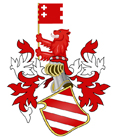Vratar
Vratar Fortress was built in the 15th century as a customs town of the Serbian Kosaca family. It is located above the river Sutjeska, on the narrowest passage of rocky cliffs. It is located 30 kilometers south of the town of Foca, along the river Sutjeska. It belonged to the parish of Drinaljevo and the area of Sutjeska named after the river Sutjeska itself.
Name: Vratar
Location: Sutjeska Foca (Republika Srpska)
Purpose: Customs control
Year of construction: 1435
Builders: Kosaca family (Duke of St. Sava Stefan Vukcic Kosaca)
Year of destruction: 1466
The fortified town of Vratar was built due to the needs of the Kosaca family to collect customs duties on goods moving along the Via Drina and Via Bosne roads. On the roads that led the trade caravans, there was a need to earn money by collecting customs duties on the trade in salt and precious metals.
In 1435, it is mentioned for the first time in the complaint of the great Dubrovnik merchant Nikola Gucetic, that his goods and silver were confiscated by the commander of the fortification, Vladislav Mrdenovic.
In loco vocato Sothescha in castro vocato Vratar.
The date in question is May 23, 1435. years when there was a customs seizure of silver. The objection was submitted to the duke who had just taken the throne and he had not yet fully controlled the principality at that time. Those were troubled times.
In 1436, we find that a complaint was filed in Dubrovnik documents about the customs duties collected at the Vratar customs fortification in Sutjeska. Complaints about customs were had by Dubrovnik merchants who had to go that way because there was no other better way due to the configuration of the terrain. The consciously built fortified city at that very place, brought the builder and the guard a strategic advantage in the control of the trade route.
In 1444 the Vratar is mentioned as a developed castello with its steward and permanent crew.
In 1452, in the charter of the king of Aragon, Alfonso, he was mentioned as one of the cities ruled by the Kosaca family, headed by the Duke of St. Sava, Stefan Vukcic Kosaca. Vratar is mentioned here as a city with a crew and large estates.
Civitate Vratar cum castris et pertinentiis suis.
The customs-fortified town of Vratar controlled two large caravan routes, Vida Drina and Via Bosne.
In 1466, with the conquest of the city by the Turkish invaders, it was destroyed and its function as a customs point ceased.
DOCUMENTATION:
